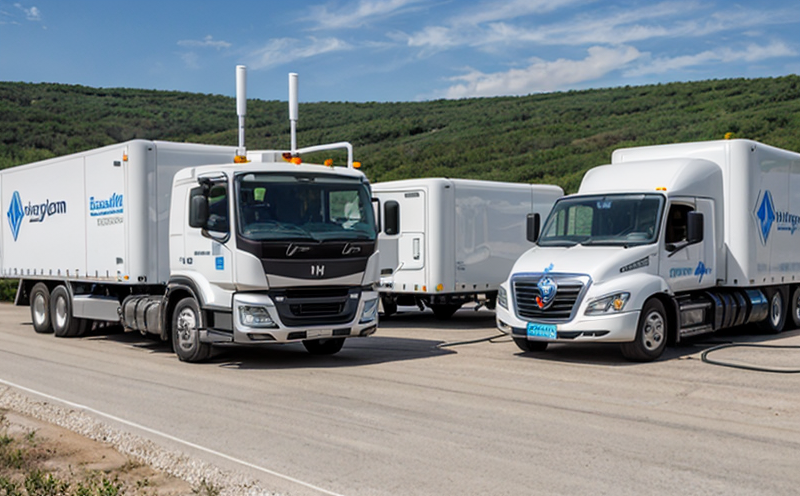IEC 60529 IP Protection Testing for Hydrogen Electrolyzers
The IEC 60529 standard provides a classification of the degrees of protection provided by enclosures against access to hazardous parts, ingress of foreign objects, and water or other liquids. This testing is critical for hydrogen electrolyzers as they operate in environments where exposure to moisture and dust can significantly impact their performance and longevity.
Hydrogen electrolyzers are complex systems that convert electrical energy into chemical energy by splitting water molecules into hydrogen and oxygen gases using an electric current. The process involves precise control over temperature, pressure, and purity of the input materials. Therefore, ensuring robust protection against environmental factors is paramount for their reliable operation.
During IEC 60529 IP testing, our team rigorously examines various aspects including ingress protection levels (IP ratings) such as IPX1 to IPX8, which denote different degrees of protection. These tests simulate real-world conditions where the equipment might be exposed to water jets, steam, condensation, and other environmental challenges.
Our state-of-the-art facilities use specialized equipment like dust chambers, spray nozzles, and temperature-controlled chambers to replicate these conditions accurately. Specimen preparation involves placing the hydrogen electrolyzer under test into an enclosure designed to mimic its operational environment. The specimen is then subjected to a series of tests aimed at assessing its ability to withstand specified levels of water ingress or dust penetration.
For instance, during IPX4 testing, we subject the specimen to a 15-degree cone of water jet for one minute while maintaining a distance of three meters. This simulates exposure to heavy rain or a strong water spray. For IPX7 tests, specimens are immersed in water up to a depth of one meter and held there for thirty minutes—this checks against complete submersion in water.
The results from these tests provide critical data on the durability and reliability of hydrogen electrolyzers under different environmental stressors. Compliance with IEC 60529 standards ensures that manufacturers can confidently market their products as robust solutions suitable for diverse operational scenarios, including outdoor or industrial settings where moisture and dust are concerns.
| IP Rating | Description of Test Conditions | Exposure Time/Depth |
|---|---|---|
| IPX1 | Protected against vertically falling particles (dust) | No exposure |
| IPX2 | Protected against vertically falling particles (dust) | No exposure |
| IPX3 | Protected against water from a nozzle up to 6.5° from the vertical | One minute at three meters distance |
| IPX4 | Protected against water from a nozzle up to 15° from the vertical | One minute at three meters distance |
| IPX5 | Protected against low-pressure water jets | Three minutes at two meters distance |
Industry Applications
- Renewable Energy: Ensures that hydrogen electrolyzers used in solar or wind-powered systems can withstand harsh weather conditions.
- Industrial Manufacturing: Supports the development of robust equipment for industrial applications where environmental factors are critical to operational integrity.
- Transportation: Guarantees that hydrogen fuel cells powering electric vehicles operate reliably in various climates.
International Acceptance and Recognition
The IEC 60529 standard is widely recognized globally, ensuring consistent quality standards across different regions. Compliance with these standards fosters international trade by providing a common language for product specifications.
Many countries have adopted the IEC 60529 IP rating system as part of their national regulations, making it essential for manufacturers to meet these requirements. For example, in Europe, compliance with IP ratings is often a prerequisite for obtaining CE marking—a requirement for all products sold within the European Union.
Companies that achieve conformity to IEC 60529 standards demonstrate their commitment to quality and reliability, which can significantly enhance brand reputation and market competitiveness. This international acceptance also opens doors to new markets and partnerships.
Competitive Advantage and Market Impact
Meeting IEC 60529 IP protection testing requirements not only ensures product reliability but also provides a competitive edge in the market. Customers looking for reliable hydrogen electrolyzers value products that have undergone rigorous environmental testing.
By adhering to these standards, companies can differentiate themselves from competitors by offering superior quality and durability. This can lead to increased customer satisfaction, enhanced brand loyalty, and higher sales volumes.
The ability to meet international standards also opens opportunities for exporting products to countries that require IP ratings as part of their regulatory framework. This not only broadens the market reach but also increases revenue potential.





